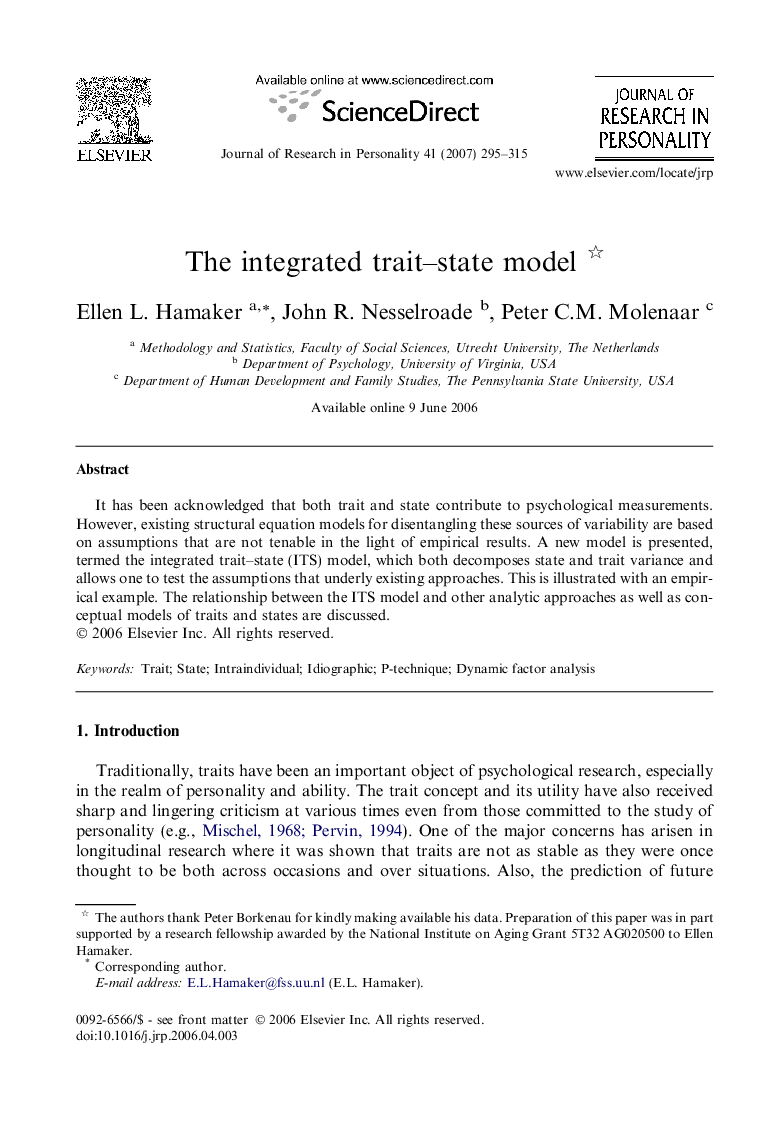| Article ID | Journal | Published Year | Pages | File Type |
|---|---|---|---|---|
| 952005 | Journal of Research in Personality | 2007 | 21 Pages |
Abstract
It has been acknowledged that both trait and state contribute to psychological measurements. However, existing structural equation models for disentangling these sources of variability are based on assumptions that are not tenable in the light of empirical results. A new model is presented, termed the integrated trait–state (ITS) model, which both decomposes state and trait variance and allows one to test the assumptions that underly existing approaches. This is illustrated with an empirical example. The relationship between the ITS model and other analytic approaches as well as conceptual models of traits and states are discussed.
Related Topics
Life Sciences
Neuroscience
Behavioral Neuroscience
Authors
Ellen L. Hamaker, John R. Nesselroade, Peter C.M. Molenaar,
